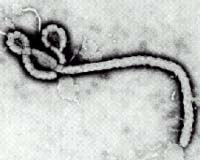| . |  |
. |
Munich, Germany (SPX) Jun 10, 2010 In the course of evolution, plants have invented many ways to defend themselves against enemies. Some produce smelly or bad-tasting ingredients, others develop thorns or have a particular effective immune response to viruses and bacteria. If selection pressure is sufficiently high, one would thus expect only those individuals to survive that are best protected. Pathogens, in turn, should have a difficult time. Everybody knows that this is not the case. Indeed, plants vary tremendously in their ability to defend themselves, and this is true not only for different species, but also for members of the same species. The group of Detlef Weigel at the Max Planck Institute for Developmental Biology has now tracked down a variant of the ACD6 gene, which functions as a universal weapon in the fight against predators. With it, the plants both produce much more of a chemical that is directly toxic to microbes and more signalling molecules important in immunity. These enable mouse ear cress plants to combat a wide range of enemies, from bacteria and fungi to insects such as aphids. However, not all varieties have this variant. While it occurs throughout the area where mouse ear cress grows, from North Africa to Scandinavia, and from Central Asia to Western Europe, at any given place it is found in only about 20 percent of individuals. This already suggests that this variant might also confer some disadvantages. "We could show that this gene makes plants resistant against pathogens, but at the same time it slows down the production of leaves and limits the size of leaves, so that these plants are always smaller than those that do not have this variant," said Detlef Weigel. "But as soon as they are being attacked, the plants with the special ACD6 variant have a leg up compared to plants with the standard version. On the down side, at places or in years where there are few enemies, they are penalized and lose out compared to the larger fellow plants." Smaller size eventually leads to reduced number of seeds and hence to fewer progeny. The conclusion of Weigel: "Just as in human society, there is no free lunch in nature."
Share This Article With Planet Earth
Related Links Max Planck Gesellschaft Epidemics on Earth - Bird Flu, HIV/AIDS, Ebola
 Experimental Treatment Protects Monkeys From Lethal Ebola Virus Post-Exposure
Experimental Treatment Protects Monkeys From Lethal Ebola Virus Post-ExposureWashington DC (SPX) Jun 09, 2010 Scientists using tiny particles of genetic material to interfere in the replication process of the deadly Ebola virus have successfully prevented monkeys exposed to that virus from dying of hemorrhagic fever. The proof-of-concept study, published in this week's issue of The Lancet, suggests that such protection also should be possible in humans. "Over the past decade, we have evaluated num ... read more |
|
| The content herein, unless otherwise known to be public domain, are Copyright 1995-2010 - SpaceDaily. AFP and UPI Wire Stories are copyright Agence France-Presse and United Press International. ESA Portal Reports are copyright European Space Agency. All NASA sourced material is public domain. Additional copyrights may apply in whole or part to other bona fide parties. Advertising does not imply endorsement,agreement or approval of any opinions, statements or information provided by SpaceDaily on any Web page published or hosted by SpaceDaily. Privacy Statement |